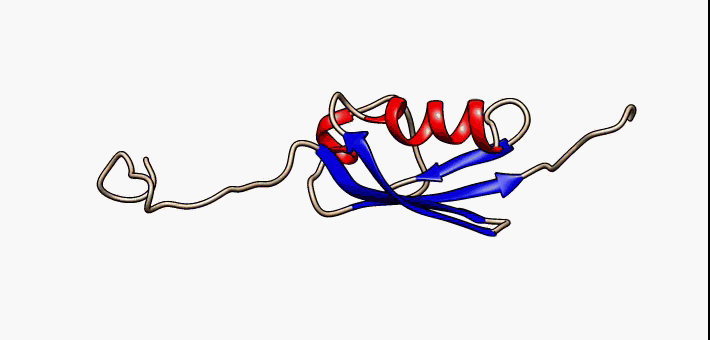
World Economic Forum (WEF) asked a group of international technology experts to identify this year’s Top 10 Emerging Technologies. After soliciting nominations from additional experts around the globe, the group evaluated dozens of proposals according to a number of criteria. Do the suggested technologies have the potential to provide major benefits to societies and economies? Could they alter established ways of doing things? Are they likely to make significant inroads in the next several years? “Technologies that are emerging today will soon be shaping the world tomorrow and well into the future – with impacts to economies and to society at large”, said Mariette DiChristina, Editor-in-Chief of Scientific American, and chair of the Emerging Technologies Steering Committee. In our constant lookout for the origins of innovation, IO will present WEF’s top-10 emerging technologies in a 10-part series. Today: Disordered proteins as drug targets.
After part 10 has been published, the whole series can be found here
Scientists have identified a particular class of proteins driving illnesses from cancer to neurodegenerative disease. These “intrinsically disordered proteins” (IDPs) looked different from the proteins with rigid structures that were more familiar in cells. IDPs were shape-shifters, appearing as ensembles of components that constantly changed configurations. This loose structure allows the IDPs to bring together a wide variety of molecules at critical moments, such as during a cell’s response to stress. Less flexible proteins tend to have a more limited number of binding partners. When IDPs do not function properly, the disease can ensue.
Undruggable
Medical researchers have not yet been able to create treatments to eliminate or regulate malfunctioning IDPs. Many have even been called undruggable, WEF notes. That is because most medicines now in use require stable structures to target and IDPs do not stay put long enough. Well-known disordered proteins that can contribute to cancer – including c-Myc, p53 and K-RAS – have proved too elusive. This picture, however, is starting to change. WEF-researchers report:
Scientists are using rigorous combinations of biophysics, computational power and a better understanding of the way that IDPs function to identify compounds that inhibit these proteins, and some have emerged as bona fide drug candidates. In 2017, researchers in France and Spain demonstrated that it is possible to aim at and hit the changeable “fuzzy” interface of an IDP. They showed that a Food and Drug Administration-approved drug called trifluoperazine (used to treat psychotic disorders and anxiety) bound to and inhibited NUPR1, a disordered protein involved in a form of pancreatic cancer. Large-scale screening tests to evaluate thousands of drug candidates for therapeutic potential have revealed several that inhibit c-Myc and some are moving towards clinical development. Additional molecules have been identified that work on IDPs, such as beta-amyloid, implicated in diseases like Alzheimer’s.
Droplets
This list will continue to grow, especially as the role that IDPs play in crucial cell parts known as membrane-less organelles becomes clearer. Often called droplets or condensates, these organelles bring vital cellular molecules – such as proteins and RNA – close together at specific times while keeping others apart. Proximity allows certain reactions to occur more easily; separation prevents various reactions. Scientists have designed powerful new molecular manipulation tools, called Corelets and CasDrop, that allow researchers to control how these droplets form. Using these tools and others, researchers have learned that IDPs may help control droplet assembly, function and disassembly.
This discovery is important because, during droplet formation and breakdown, IDPs interact with various binding partners and sometimes hold new shapes for a few moments as they do so. It may be easier to find drugs that find and bind to those shapes than it is to find compounds that can hit IDPs in their other guises. Researchers across the globe are pioneering efforts to uncover these droplet-related mechanics.
Drugging the undruggable
The industry is also betting on the therapeutic potential of IDPs. Biotechnology company IDP Pharma is developing a type of protein inhibitor to treat multiple myeloma and small-cell lung cancer. Graffinity Pharmaceuticals, now part of NovAliX, has identified small molecules to target the disordered protein tau, which is involved in Alzheimer’s pathology. Cantabio Pharmaceuticals is on the hunt for small molecules to stabilize IDPs involved in neurodegeneration. And a new company, Dewpoint Therapeutics, is exploring the idea that droplets and their disordered components, because of the way they bring molecules together for enhanced reactions, could be used as drugs targets. It is increasingly likely that in the next three to five years, these once “undruggable” proteins will end up in the crosshairs of pharmaceutical development.
(Most of this article is drawn from the 2019 Top 10 Emerging Technologies report)








